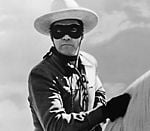 Physician Leadership: The Lone Ranger vs. the Team Captain
Physician Leadership: The Lone Ranger vs. the Team Captain
Your leadership style goes a long way towards determining your team’s results. As a physician leader, your style organizes the way your team functions and creates your team member’s experience of “playing” on your team.
For most of us, our leadership style is invisible. It is simply not something we are aware of when we are using it. For most doctors, that is a problem. We graduate from residency with a specific physician leadership style/paradigm that gets in the way of our effectiveness and makes us work way too hard - and leads to physician burnout.
In this article let me show you
=> The Doctor’s Default Leadership Paradigm and the problems it causes
=> Three steps to a new Physician Leadership Style that makes everything in your practice easier
=> A specific example of the new paradigm in action
Our Default Physician Leadership Style:
The Top Down, Command and Control, Lone Ranger
Our medical education powerfully conditions all doctors in a Top-Down, Command and Control physician leadership style. This style is audible in the language we use to describe how a doctor relates to the team.
 The Doctor "gives orders" and the team (and patient) is expected to obey/comply.
The Doctor "gives orders" and the team (and patient) is expected to obey/comply.
This unconscious and universal leadership style has negative consequences for everyone involved.
- The doctor works too hard
- You feel like you have to know all the answers and that asking for help or input is a sign of weakness on your part.
- The team is turned into "sheep", waiting for the doctor to tell them what to do. They are waiting for orders and hesitate to act without your permission.
- Much of the skills and experience of your team go to waste. You don’t ask what they think, they don’t volunteer their opinions without being asked and poor decisions are made and acted on all the time.
Given the fact that we typically enter our training in our early twenties and this is what we learn for leadership skills ... it is no wonder that doctors make naturally lousy leaders and avoid leadership positions whenever possible.
When the Lone Ranger works ... and when it does not
This Lone Ranger/Top Down style is inherent in the structure of the medical work team because it works well in the area of clinical diagnosis and treatment. The doctor makes the diagnosis and supervises/leads the treatment team via orders. That’s great … but …
What about all the other activities that go into the day to day functioning of your patient care team and your larger organization – the basics of patient flow, administration, operations and personnel issues? Your team will see you as the leader and look to you to give them orders even in these non-clinical areas - where you are totally clueless.
Example:
How often does your team or practice manager come to you with a question about operations? Something like, "Dr. Smith, what should we do about these pathology reports? I just found a pile of them in Dr. Jones box by mistake."
You spend your day in the room with patients. You don’t know what is going on outside the exam room and don’t have a clue about the path reports. You are one of the least qualified people in the office to answer that question. That won’t stop you from giving it a shot though.
There you sit at the apex of the top-down physician leadership pyramid. This is not going to end well if you are the Lone Ranger that tries to answer this question intelligently ... right? But everyone is waiting for you to tell them what to do. You will give an answer/order, they will obey/comply and it will take three or four tries to get a system that works. This happens every day in doctor's offices around the world and it does not have to be this way.
Notice:
These are also the problems that drive you crazy during your work day and get in the way of you actually practicing medicine. If all you had to do was see patients, diagnose and build treatment plans ... that is the doctor’s idea of heaven. Your physician leadership must extend beyond your clinical activities and into operations if you are ever going to build your ideal practice.
Let me show you a whole different Collaborative Physician Leadership Style I call the "Team Captain" … one where …
 - You don't have to work so hard
- You don't have to work so hard
- You tap the skills and experiences of your whole team – they come up with the answers, because they are the experts in operations
- The whole team is engaged and taking on the work at hand from the start
There are just three simple steps to let go of your Lone Ranger. Let me show you the steps and give you an example of what they look like in action.
Three Steps to the Team Captain
1) Set and Hold the Vision/Goal
This is one of Steven Covey's "7 Habits of Highly Effective People". He calls it "Begin with the end in mind".
One of the most important skills of the Team Captain is to set the vision and give the team an outcome goal they can aim for. In the example of the misplaced path reports above, the target could be
Get all the path reports filed appropriately within 24 hours of receiving them.
Setting the vision/goal frames the team discussion from this point forward. This goal keeps everyone on target, moving to your definition of success.
2) Ask Powerful Questions
This is another skill set we didn't learn in med school or residency. The ability to ask powerful, open ended questions is key to the Team Captain physician leadership style.
Here is the simplest way to ensure your questions are always open ended ...
Start them with either
"What ....
or
"How ...
Notice how a question that begins with “what ...” or “how ...” can’t be answered with a yes or no. When faced with this kind of a question the listener must think first and then answer with a complete thought. (These are fabulous questions for your patient interviews as well)
These questions are the foundation for tapping into your team’s skills and experience.
Power Tip:
You can also use these questions to identify the Vision/Goal with your team. That’s right; you don’t even need to be the one that comes up with the team Goals in this physician leadership paradigm.
3) Listen and Hold the Problem Solving CONTEXT
If we are talking about things that go on outside the exam room while you are with a patient – your team has the answers if you
1) State the Vision/Goal
2) Ask Powerful Questions
3) Then LISTEN and continue to ask questions until your action plan is complete
As the Team Captain you are responsible for creating and maintaining the CONTEXT in which your TEAM solves the TEAM's Problems
To accomplish this as a physician leader, you take responsibility for
- Holding the Vision
- and Asking Powerful Questions
This Context of trusting your team and engaging them from the start is the essence of Collaborative Leadership.
YOU don’t come up with the answers. Needing to answer everyone else's questions and have all the solutions is the Lone Ranger. When you are that kind of top down physician leader - you are working too hard.
Besides, you are not qualified to answer many of these questions. If you do have input, feedback or opinions - save your ideas for last, AFTER everyone else has been given a chance to participate.
====================
AN EXAMPLE:
Let’s use the case of the mis-filed path reports above. Here is what a Team Captain, collaborative physician leader might do with this issue.
You discuss the problem with your practice manager and agree the Goal is to have the path reports all filed correctly within 24 hours of them being delivered.
You pull the entire team together – your monthly staff meeting is ideal for this.
Tell them
“We have had some issues with getting path reports filed appropriately and in a timely fashion. Our goal as a team going forward is to figure out a way to get all path reports filed correctly within 24 hours of them being delivered to the office. I am not the expert here and want us to design this system as a team. We need everyone’s input to build a system that works for all of us. So … “
(start asking powerful questions here ... see below)
Question Examples:
- What are your thoughts on how we could get these path reports filed?
- How do you suggest we approach this issue?
- What are the things we are doing now that seem to work at least a little bit?
- How can we do more of these?
- What things are not working?
- How can we change them to hit our goal?
- What members of our team need to be involved in this new system?
- How can we make this so it involves as few people and as few touches of paper as possible?
- How can we make it so this path report filing system does not interfere with the activities of caring for our patients in the office?
- How will we track the performance of this new system?
- What is our next step?
- Who is the manager of this project?
- When will we meet to discuss this again?
In a short period of time your team will design this system. You don’t have to have the answers. You have the powerful questions and focus them on the Vision/Goal of your ideal outcome.
Because the team was involved in designing the system from the start … they are engaged and fully bought in. They don’t have to obey an order from you. They are carrying out an action plan they helped to create. Creating this action plan tapped the skills and experience of the whole team.
Goodbye Lone Ranger. Hello Team Leader.
====================
Try this three step Team Captain approach with your people
1) Set the Vision/Goal
2) Ask Powerful Questions
3) Listen and Hold the Problem Solving Context
PLEASE LEAVE A COMMENT:
What are your favorite physician leadership skills and how do you use them?


